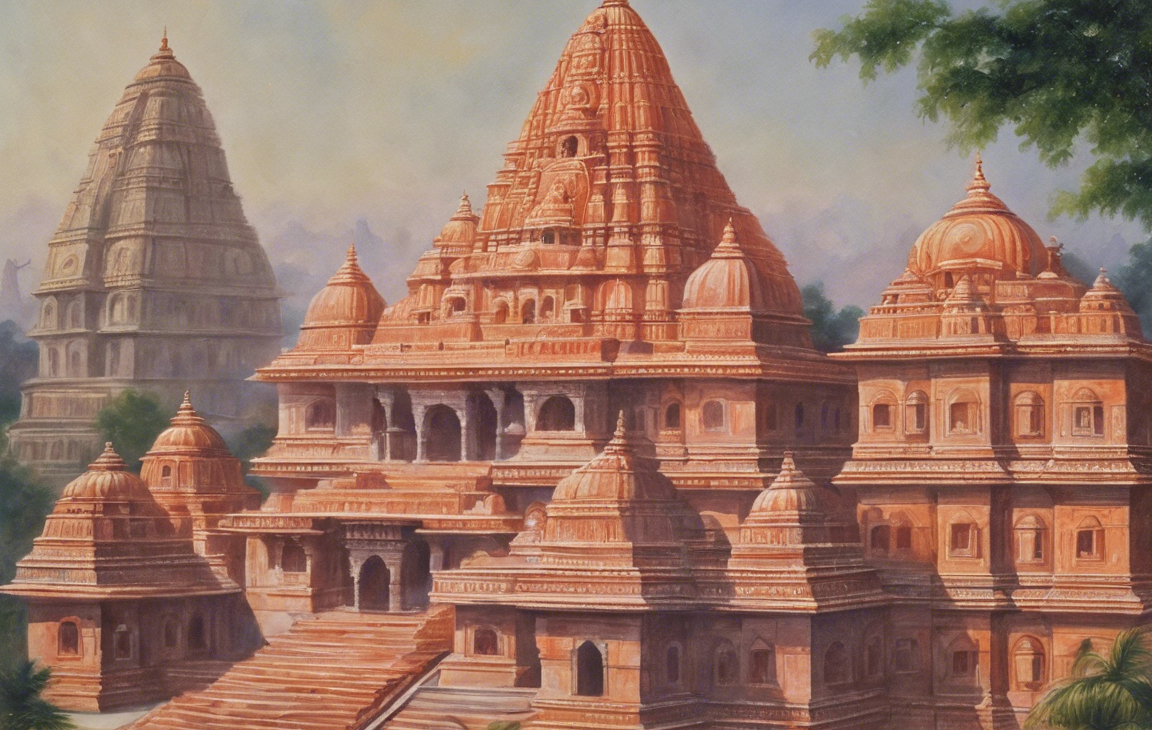On August 5, 2020, a momentous event took place in the town of Ayodhya, India – the Pran Pratishtha ceremony for the Ram Mandir. The ceremony marked the consecration of the newly constructed temple at the Ram Janmabhoomi, the birthplace of Lord Ram. This significant occasion was attended by various dignitaries, religious leaders, and devotees, and it holds immense cultural, historical, and religious importance for millions of people in India and around the world.
History of the Ram Mandir
The construction of the Ram Mandir holds deep historical significance that dates back centuries. The site of the temple has been a focal point of contention and reverence for Hindus and Muslims alike. The Babri Masjid, a mosque that stood at the site, was demolished in 1992, leading to years of legal battles and socio-political tensions. In 2019, the Supreme Court of India ruled in favor of the construction of a Ram Mandir at the site, bringing an end to the decades-long dispute.
Significance of the Ram Mandir
The construction of the Ram Mandir is not merely a physical structure but a symbol of faith, unity, and cultural identity for millions of Hindus. For centuries, Lord Ram has been revered as the embodiment of righteousness, duty, and devotion in Hindu philosophy. The Ram Mandir serves as a place of worship and pilgrimage for devotees who seek blessings, spiritual solace, and a connection to their religious heritage.
Architecture and Design
The architecture of the Ram Mandir is a blend of traditional and contemporary styles, designed to reflect the grandeur and sanctity of the temple. The main sanctum sanctorum houses the idol of Lord Ram, accompanied by idols of Goddess Sita, Lord Lakshman, and Lord Hanuman. The intricate carvings, sculptures, and motifs adorning the temple walls and pillars pay tribute to the rich artistic heritage of India.
Rituals and Ceremonies
The Pran Pratishtha ceremony is a sacred ritual that involves invoking the divine presence of the deity into the idols installed in the temple. Priests and religious leaders perform elaborate rituals, chanting of hymns, and offerings to consecrate the temple and seek the blessings of the deity. The ceremony is a culmination of years of devotion, dedication, and spiritual fervor of millions of devotees who have awaited this historic moment.
Cultural Impact
The construction of the Ram Mandir and the Pran Pratishtha ceremony have far-reaching cultural implications for India and its people. It signifies the reaffirmation of India’s cultural and spiritual heritage, fostering a sense of unity, pride, and identity among Hindus. The temple serves as a symbol of religious freedom, tolerance, and coexistence, emphasizing the importance of mutual respect and understanding among different faiths.
FAQs about the Ram Mandir Pran Pratishtha Ceremony
1. What is the significance of the Pran Pratishtha ceremony in Hindu rituals?
The Pran Pratishtha ceremony is a crucial ritual in Hinduism where the divine presence of the deity is invoked into the idol, establishing a connection between the physical form and the spiritual essence of the deity.
2. Why is the construction of the Ram Mandir considered a landmark event in India’s history?
The construction of the Ram Mandir at the Ram Janmabhoomi site signifies the resolution of a long-standing dispute and the restoration of a place of worship that holds immense religious and cultural significance for millions of Hindus.
3. How does the Ram Mandir contribute to religious harmony and tolerance in India?
The construction of the Ram Mandir is a demonstration of religious freedom, coexistence, and respect for diverse faiths, promoting harmony and understanding among different communities in India.
4. What are the architectural features that distinguish the Ram Mandir from other temples in India?
The Ram Mandir combines traditional temple architecture with modern design elements, showcasing intricate carvings, sculptures, and motifs that highlight India’s artistic heritage and craftsmanship.
5. How can devotees and visitors participate in the worship and rituals at the Ram Mandir?
Devotees and visitors are welcome to visit the Ram Mandir, offer prayers, and participate in the daily rituals and ceremonies conducted by the temple priests. Additionally, special festivals and events are organized for devotees to partake in the spiritual celebrations.
In conclusion, the Ram Mandir Pran Pratishtha ceremony symbolizes a historic moment in India’s cultural and religious landscape, embodying the values of faith, unity, and reverence. The temple stands as a testament to the enduring legacy of Lord Ram and serves as a beacon of hope, harmony, and spirituality for generations to come. Its inauguration marks not only the construction of a physical structure but the consecration of a sacred space where devotees can connect with the divine and find peace in the embrace of their faith.







